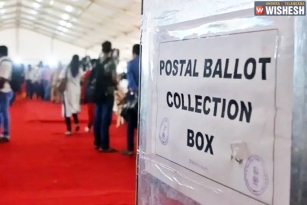India-Pak N-war: 21 mn may die, half of ozone layer will vanish
September 29, 2016 20:45
Hypothetical as it maybe the detrimental point here would be who defends and who is the Aggressor. Granted Pakistan has never been able to overpower India but neither has India been able to eliminate or eternally neutralize the threat of Pakistan the way Israel did with Egypt and Jordan. If India and Pakistan fought a war detonating 100 nuclear warheads (around half of their combined arsenal), each equivalent to a 15-kiloton Hiroshima bomb, more than 21 million people will be directly killed, about half the world’s protective ozone layer would be destroyed, and a “nuclear winter” would cripple the monsoons and agriculture worldwide.
Pakistan has an estimated 110 to 130 nuclear warheads as of 2015–an increase from an estimated 90 to 110 warheads in 2011–according to this report from the Bulletin of the Atomic Scientists, a global disarmament advocacy. India is estimated to have 110 to 120 nuclear warheads.
It does not really matter if India has fewer nuclear weapons than Pakistan, IndiaSpendreported in April, 2015, primarily because of the doctrine of “mutually assured destruction”, or MAD, as it is commonly known (See this IndiaSpend report for more about India’s nuclear weapons program).
66% Pakistan’s nuclear weapons on ballistic missiles
As many as 66% Pakistani nuclear warheads are mounted on 86 land-based ballistic missiles, according to Bulletin of the Atomic Scientists data estimates.
Pakistan’s Hatf (named after the sword of Prophet Muhammad) series of ballistic missiles has been developed–and is still under development–keeping India in mind.
A major attack by Pakistan’s nuclear-tipped medium-range ballistic missiles (MRBMs) would likely target India’s four major metropolitan cities–New Delhi, Mumbai, Bengaluru and Chennai (depending on where the missile is fired from), according to Sameer Patil, fellow, national security, ethnic conflict and terrorism at Gateway House, a think tank in Mumbai.
The MRBMs would also target “the major commands of the Indian Army”, Patil told IndiaSpend.
Nearly half (40) of Pakistan’s ballistic missile warheads could be mated to Ghauri (named after 12th-century Afghan king Shahbuddin Ghauri, also known as Muhammad of Ghauri) MRBMs. The missile has a claimed range of 1,300 km and can target Delhi, Jaipur, Ahmedabad, Mumbai, Pune, Nagpur, Bhopal and Lucknow, according to this 2006 report on Pakistan’s ballistic missile programme by the National Institute of Advanced Studies (NIAS), Bengaluru.
Pakistan has an estimated eight warheads which could be mated to the Shaheen (Falcon) II. This MRBM has a range of 2,500 km and can target most major Indian cities, including Kolkata on the east coast.

India’s triad: Submarine, missile and aircraft
India possesses weapons of mass destruction in the form of nuclear weapons and, in the past, chemical weapons. Though India has not made any official statements about the size of its nuclear arsenal, recent estimates suggest that India has 110 nuclear weapons consistent with earlier estimates that it had produced enough weapons-grade plutonium for up to 75–110 nuclear weapons.
Biological weapons: India has a well-developed biotechnology infrastructure that includes numerous pharmaceutical production facilities and bio-containment laboratories (including BSL-3 and BSL-4) for working with lethal pathogens. It also has highly qualified scientists with expertise in infectious diseases. Some of India's facilities are being used to support research and development for biological weapons (BW) defence purposes. India has ratified the Biological Weapons Convention (BWC) and pledges to abide by its obligations. There is no clear evidence, circumstantial or otherwise, that directly points toward an offensive BW program. India does possess the scientific capability and infrastructure to launch an offensive BW program, but has chosen not to do so. In terms of delivery, India also possesses the capability to produce aerosols and has numerous potential delivery systems ranging from crop dusters to sophisticated ballistic missiles.
India's no-first-use policy: India has a declared nuclear no-first-use policy and is in the process of developing a nuclear doctrine based on "credible minimum deterrence." In August 1999, the Indian government released a draft of the doctrine which asserts that nuclear weapons are solely for deterrence and that India will pursue a policy of "retaliation only".
















